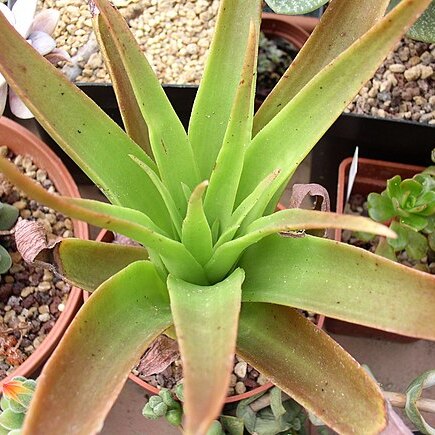Perennial or biennial herb, succulent, with one rosette, erect leaves spirally arranged, old ones remaining on stem, ± 1.3 m high when flowering. Leaves lanceolate to linear-triangular, 150-300 x 30-60 mm, acute, drying from apex, dorsiventrally flattened, canaliculate, glabrous except for few irregularly spaced cilia or teeth, green to yellowish green. Inflorescence a flat-topped thyrse, many dichasia, many pedicellate flowers; peduncle with leaf-like bracts, shortening upwards. Calyx fleshy, acute drawn into stout hair, membranous margins with few teeth, yellowish green. Corolla tubular, fused 0.5-0.8 mm, pale yellow; lobes oblong to obovate, 3-4 mm long, rounded, slightly hooded, recurved. Flowering time Mar.-June.
Perennial or biennial shrublet, up to 1.3 m high, with a single rosette. Leaves narrowly triangular to lanceolate, marginal teeth with broad base. Inflorescence a flat-topped thyrse with numerous pedicellate flowers in dichasia. Flowers pale yellow.


